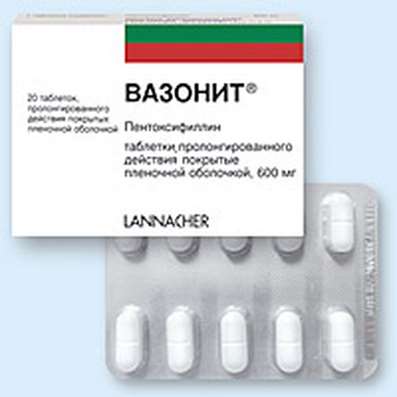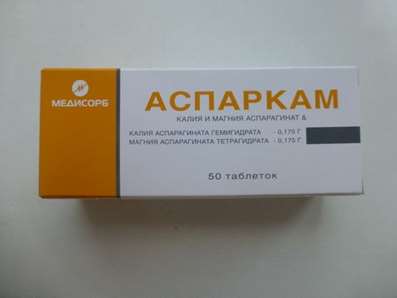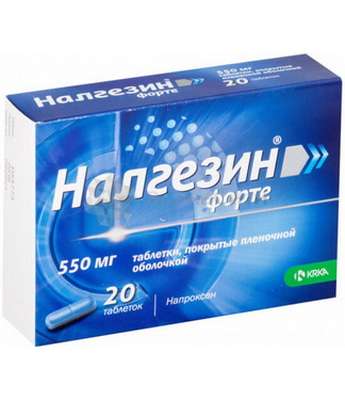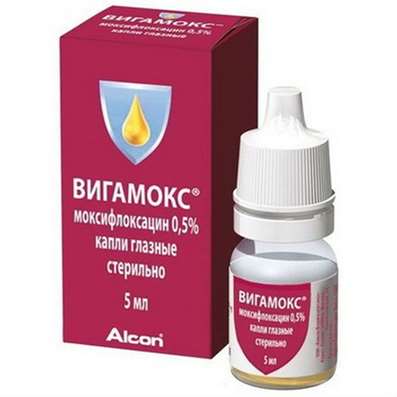Instruction for use: Ingaron
I want this, give me price
Dosage form: Lyophilizate for the preparation of a solution for intramuscular and subcutaneous administration; Lyophilizate for the preparation of a solution for intranasal administration
Active substance: Interferonum gamma
ATX
L03AB03 Interferon Gamma
Pharmacological groups:
Antiviral drugs (excluding HIV)
Interferons
The nosological classification (ICD-10)
A16 Tuberculosis of respiratory organs, not confirmed bacteriologically or histologically
A56 Other chlamydial diseases, sexually transmitted infections: Chlamydial infections; Chlamydia; Tropical bubo
A60 Anogenital herpetic viral infection [herpes simplex]: Herpes simplex genitalis; Banal recurrent genital herpes; Secondary genital herpes; Genital herpesvirus infection; Genital herpetic infections; Genital herpes; Herpes genitalia; Genital herpes; Herpes simplex organs; Herpetic lesions of the mucocutaneous urinary organs; Herpetic lesions of the genitals; Primary genital herpes; Primary herpes simplex; Simple herpes extragenital and genital localization; Recurrent genital herpes; Recurrent herpes of genital organs; Herpes of the lips and genitals
A63.0 Anogenital (venereal) warts: Anogenital warts; Venereal warts; Condylomata genital; Condyloma pointed; Externally pointed genital warts; Externally pointed condyloma; Pointed Condyloma; Flat condyloma
B02 Shingles [herpes zoster]: Herpes zoster; Herpes zoster; Shingles Herpes; Localized shingles; Infection caused by the herpes zoster virus; Shingles
B18.0 Chronic viral hepatitis B with delta-agent: Chronic viral hepatitis B; Chronic active hepatitis B; Chronic viral hepatitis B; Chronic hepatitis B HBeAg-positive
B18.1 Chronic viral hepatitis B without delta-agent: Chronic viral hepatitis B; Chronic active hepatitis B; Chronic viral hepatitis B; Chronic hepatitis B; Chronic hepatitis B HBeAg-negative
B18.2 Chronic viral hepatitis C: Hepatitis C; Recurrence of chronic hepatitis C; Chronic active hepatitis C; Chronic viral hepatitis C; Chronic hepatitis C without cirrhosis; Chronic hepatitis C with compensated cirrhosis; Chronic hepatitis C
B20-B24 Disease caused by human immunodeficiency virus [HIV]: Deployed stage of HIV infection; AIDS in children; HIV / AIDS infection; Infections with HIV; AIDS; Human Immunodeficiency Virus HIV-1; HIV-1 infection HIV infection; HIV
C80 Malignant neoplasm without specification of localization: Malignant tumor; Malignant neoplasm; Malignant neoplasms of different localization; Malignant tumors; Eton-Lambert syndrome; Locally prevalent forms of malignant neoplasms; Metastatic ascites; Metastatic ascites; Cerebellar degeneration in tumors; Hereditary cancers; Metastatic tumors; Cancer ascites; Solid tumors
L92 Granulomatous changes in skin and subcutaneous tissue
N41.1 Chronic prostatitis: Recurrent prostatitis; Chronic bacterial prostatitis; Chronic abacterial prostatitis; Chronic bacterial prostatitis; Chlamydial prostatitis; Exacerbation of chronic prostatitis; Chronic abacterial prostatitis
N74.4 Female pelvic inflammatory disease caused by chlamydia (A56.1 +): Chlamydial salpingitis; Chlamydial infections; Chlamydia
Composition and release form
Lyophilizate for the preparation of solution for intramuscular and subcutaneous administration 1 fl.
active substance: Interferon gamma 100 thousand ME; 500 thousand ME; 1 million ME; 2 million ME
Excipient: mannitol
In vials; In a pack of cardboard 1, 5, 10 or 20 bottles or in contour mesh or cassette contour pack 1, 5, 10 or 20 bottles; In a pack of cardboard 1 package.
Liofilizate for the preparation of solution for intranasal administration 1 fl.
active substance: Interferon gamma 100 thousand ME (5.5 ± 0.5)
Auxiliary substances: mannitol
In vials; In a pack of cardboard 1 or 5 bottles (complete with water for injection 5 ml in a vial or ampoule).
Description of dosage form
Both dosage forms: loose or porous mass of white color, hygroscopic.
Pharmachologic effect
Mode of action - antiviral, immunomodulating.
Pharmacodynamics
Ingaron® is a recombinant human gamma interferon, consisting of 144 amino acid residues (ao), devoid of the first three ao. - Cys-Tyr-Cys, replaced by Met. The molecular weight is 16.9 kDa. Obtained by microbiological synthesis in a recombinant strain of Escherichia coli and purified by column chromatography. Specific antiviral activity on cells (human fibroblasts) infected with vesicular stomatitis virus is 2 · 107 U / mg protein. Interferon gamma (immune interferon) is the most important pro-inflammatory cytokine, the producers of which in the human body are natural killer cells, CD4 Th1 cells and CD8 cytotoxic suppressor cells. Receptors for interferon gamma have macrophages, neutrophils, natural killer cells, cytotoxic T-lymphocytes. Interferon gamma activates effector functions of these cells, in particular their microbicide, cytotoxicity, production of cytokines, superoxide and nitroxide radicals, thereby causing the death of intracellular parasites. Interferon gamma inhibits the B-cell response, IL-4, suppresses IgE production and CD23 antigen expression. It is an inducer of apoptosis of differentiated B cells, giving rise to autoreactive clones. Suppresses the suppressive effect of IL-4 on IL-2-dependent proliferation and generation of lymphokine-activated killers. Activates the production of acute inflammation proteins, enhances the expression of the C2 and C4 genes of the components of the complement system.
Unlike other interferons, it increases the expression of antigens of the main histocompatibility complex (MHC) of both 1st and 2nd classes on different cells, and induces the expression of these molecules even on those cells that do not express them constitutively. This improves the effectiveness of antigen presentation and the ability to recognize them by T lymphocytes.
Interferon gamma blocks the replication of viral DNA and RNA, the synthesis of viral proteins and the assembly of mature viral particles. Interferon gamma has a cytotoxic effect on virus-infected cells.
Interferon gamma blocks the synthesis of β-TGF, responsible for the development of pulmonary fibrosis and liver.
Indication of the Ingaron
Lyophilizate for solution for intramuscular and subcutaneous administration
Complex therapy:
Chronic viral hepatitis C;
Chronic viral hepatitis B;
HIV / AIDS infection;
pulmonary tuberculosis;
Oncological diseases (as an immunomodulator - including in combination with chemotherapy);
Urogenital chlamydia;
Chronic prostatitis;
Genital herpesvirus infection and herpes zoster (Herpes zoster) - in monotherapy;
Anogenital warts (human papilloma virus) - treatment and prevention of recurrence of the disease.
Prevention of infectious complications in patients with chronic granulomatous disease.
Liofilizate for the preparation of a solution for intranasal administration
Complex therapy for the prevention and treatment of influenza and avian influenza (H5N1 and H1N1).
Contraindications
Common for both dosage forms:
Individual intolerance to interferon gamma or any other component of the drug;
pregnancy.
Lyophilizate for solution for intramuscular and subcutaneous administration:
Autoimmune diseases;
diabetes.
Lyophilizate for the preparation of solution for intranasal administration: children under 7 years of age.
Application in pregnancy and breastfeeding
Contraindicated in pregnancy.
Side effects
Lyophilizate for the preparation of solution for intramuscular and subcutaneous injection: local soreness at the site of the injection into the form of mild pain of a lomiting nature (like an overtrained muscle) and hyperemia.
The use of doses over 1 million ME can be accompanied by the development of influenza-like syndrome: headache, weakness, fever, joint pain. Slightly expressed symptoms do not require pharmacological correction. At the expressed phenomena - kupirovanie by means of paracetamol.
Lyophilizate for the preparation of solution for intranasal administration: not noted.
Dosing and Administration
IM, SC. The contents of the vial are dissolved in 2 ml of water for injection. The dose of the drug is set individually.
For treatment of patients with chronic viral hepatitis B, chronic viral hepatitis C, as well as HIV / AIDS and pulmonary tuberculosis, the average daily dose for adults is 500 thousand ME. It is administered 1 time per day, daily or every other day. The course of treatment is from 1 to 3 months, if necessary, after 1-2 months, the course of treatment is repeated.
For the prevention of infectious complications in patients with chronic granulomatous disease, the average daily dose for adults is usually 500 thousand ME. It is administered 1 time per day, daily or every other day. On the course - 5-15 injections, if necessary, the course is prolonged or repeated after 10-14 days.
For the treatment of cancer, the average daily intake for adults is 500 thousand ME. Introduced 1 time per day, every other day.
For the treatment of genital herpes-viral infection, herpes zoster (Herpes zoster) and urogenital chlamydia, the average daily dose for adults is 500 thousand IU. Introduced 1 time per day, c / to, every other day. The course of treatment is 5 injections.
For the treatment of chronic prostatitis, the daily dose is 100 thousand IU. It is administered 1 time per day after a day. The course of treatment is 10 injections.
For the treatment of anogenital warts, the daily dose is 100 thousand IU. It is administered once a day, after a cryodestruction, every other day. The course of treatment is 5 injections.
Intranasally. The contents of the vial are dissolved in 5 ml of water for injection.
At the first signs of the flu, ARVI - 2 drops in each nasal passage, after the toilet of the nasal passages, 5 times a day for 5-7 days.
For the prevention of acute respiratory viral infections and influenza, when in contact with a patient and / or when supercooling, 2-3 drops in each nasal passage every other day for 30 minutes before breakfast for 10 days. If necessary, preventive courses are repeated. When a single contact is enough, one instillation.
After instillation, it is recommended to massage the wings of the nose with your fingers for several minutes to evenly distribute the drug in the nasal cavity.
Conditions of supply of pharmacies
According to the prescription of the doctor (lyophilizate for the preparation of solution for the IM and SC the introduction).
Storage conditions of the drug Ingaron
In dry, the dark place at a temperature of 2-10 ° C. Do not freeze.
Keep out of the reach of children.
Shelf life of the drug Ingaron
2 years.
Do not use after the expiry date printed on the package.

 Cart
Cart





